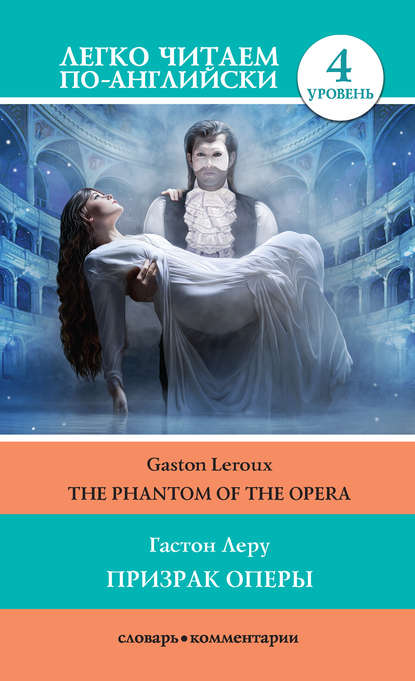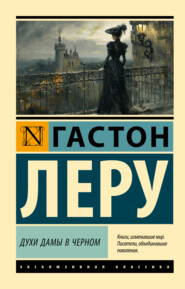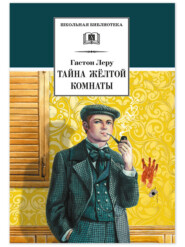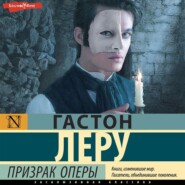По всем вопросам обращайтесь на: info@litportal.ru
(©) 2003-2024.
✖
Призрак оперы / The Phantom of the Opera
Настройки чтения
Размер шрифта
Высота строк
Поля
Призрак оперы / The Phantom of the Opera
Gaston Leroux
Легко читаем по-английски
Роман Гастона Леру был впервые опубликован в 1909 году и с тех пор стал одним из самых ярких явлений массовой культуры. «Призрак оперы» рассказывает историю молодой оперной певицы Кристины. В её жизни появляется незнакомец, таинственный и мрачный Призрак, обитающий в здании Парижской оперы. Постепенно Кристина оказывается под его влиянием.
Для удобства читателя текст сопровождается комментариями и кратким словарем.
Предназначается для продолжающих изучать английский язык (уровень 4 – Upper-Intermediate).
Гастон Леру / Gaston Leroux
Призрак оперы / The Phantom of the Opera
© Матвеев С.А., адаптация текста, комментарий, словарь, 2019
© ООО «Издательство АСТ»
Prologue
The Opera ghost really existed. He was not, as was long believed, a creature of the imagination of the artists, the superstition of the managers, or a product of the absurd and impressionable brains of the young ladies and their mothers. Yes, he existed in flesh and blood.
I began to study the archives of the National Academy of Music[1 - National Academy of Music – Национальная академия музыки (французский оперный театр в Париже)]. The events do not date more than thirty years back. The truth was slow to enter my mind, at last, I received the proof that my presentiments had not deceived me, and I was rewarded for all my efforts on the day when I acquired the certainty that the Opera ghost was more than a mere shade.
On that day, I had spent long hours in the library. I had just left the library in despair, when I met the delightful acting-manager [2 - acting-manager – администратор]of our National Academy, who was chatting with a lively old man, to whom he introduced me gaily. The acting-manager knew all about my investigations and how eagerly and unsuccessfully I had been trying to discover the whereabouts of the examining magistrate [3 - examining magistrate – судебный следователь]M. Faure[4 - Faure – Фор]. Nobody knew what had become of him, alive or dead; and here he was back from Canada, where he had spent fifteen years, and the first thing he had done, on his return to Paris, was to come to the Opera. The old man was M. Faure himself.
We spent an evening together and he told me the whole Chagny [5 - Chagny – Шаньи]case as he had understood it at the time. But he could not tell me what became of Christine Daae [6 - Christine Daae – Кристина Даэ]or the viscount. When I mentioned the ghost, he only laughed. He had listened to the evidence of a witness who declared that he had often met the ghost. This witness was none other than the man whom all Paris called the “Persian.” The magistrate took him for a visionary.
I was interested by this story of the Persian. I wanted to find this valuable and eccentric witness. My luck began to improve and I discovered him in his little flat in the Rue de Rivoli[7 - Rue de Rivoli – улица Риволи], where he had lived ever since and where he died five months after my visit. The Persian had told me all that he knew about the ghost and had handed me the proofs of the ghost’s existence—including the strange correspondence of Christine. I was no longer able to doubt. No, the ghost was not a myth!
I went into the past history of the Persian and found that he was an upright man, incapable of inventing a story.
So, with my papers in hand, I went over the ghost’s vast domain, the huge building which he had made his kingdom. Later, when digging in the substructure of the Opera, the workmen found a corpse. I was at once able to prove that this corpse was that of the Opera ghost.
But we will return to the corpse and what ought to be done with it. For the present, I must conclude this very necessary introduction by thanking M. Mifroid (who was the commissary of police called in for the first investigations after the disappearance of Christine Daae), M. Remy, the late secretary, M. Mercier, the late acting-manager, M. Gabriel, the late chorus-master[8 - chorus-master – хормейстер], and more particularly Mme. la Baronne de Castelot-Barbezac[9 - Mme. la Baronne de Castelot-Barbezac – баронесса де Кастело-Барбезак], who was once the “little Meg[10 - little Meg – крошка Мег]” of the story (and who is not ashamed of it). All these were of the greatest assistance to me; and, thanks to them, I shall be able to reproduce those hours of sheer love and terror, in their smallest details, before the reader’s eyes.
Chapter I
It was the evening on which MM. Debienne and Poligny[11 - MM. Debienne and Poligny – господа Дебьенн и Полиньи], the managers of the Opera, were giving a last gala performance to mark their retirement. Suddenly the dressing-room of La Sorelli[12 - the dressing-room of La Sorelli – гримёрная Сорелли], one of the principal dancers, was invaded by half-a-dozen young ladies of the ballet, who had come up from the stage. They rushed in amid great confusion. Sorelli, who wished to be alone for a moment, looked around angrily at the mad and tumultuous crowd. It was the little girl who gave the explanation in a trembling voice:
“It’s the ghost!” And she locked the door.
Sorelli was very superstitious. She shuddered when she heard the little girl speak of the ghost, called her a “silly little fool” and then asked for details:
“Have you seen him?”
“As plainly as I see you now!” said the little girl: “If that’s the ghost, he’s very ugly!”
“Oh, yes!” cried the chorus of ballet-girls.
And they all began to talk together. The ghost had appeared to them in the shape of a gentleman in dress-clothes, who had suddenly stood before them in the passage. He seemed to have come straight through the wall.
“Pooh!” said one of them. “You see the ghost everywhere!”
And it was true. For several months, there had been nothing discussed at the Opera but this ghost in dress-clothes. He was like a shadow, he spoke to nobody, to him nobody dared speak and he vanished, no one knowing how or where. He made no noise in walking. When he did not show himself, he betrayed his presence by accident, comic or serious.
After all, who had seen him? You meet so many men dressed in black at the Opera who are not ghosts. But this suit had a peculiarity of its own. It covered a skeleton. At least, so the ballet-girls said. And, of course, it had a death’s head[13 - death’s head – череп].
Was all this serious? The truth is that the idea of the skeleton came from the description of the ghost given by Joseph Buquet[14 - Joseph Buquet – Жозеф Бюке], the chief scene-shifter[15 - the chief scene-shifter – старший машинист сцены], who had really seen the ghost. He had seen him for a second—for the ghost had run away. Joseph said:
“He is extraordinarily thin. His eyes are very deep, you just see two big black holes, as in a dead man’s skull. His skin, which is stretched across his bones like a drumhead, is not white, but yellow. His nose is so little worth talking about that you can’t see it; and the absence of that nose is a horrible thing to look at. All the hair he has is three or four long dark locks on his forehead and behind his ears.”
This chief scene-shifter was a serious, sober, steady man. His words were received with interest and amazement; and soon there were other people to say that they too had met a man with a death’s head on his shoulders. And then, one after the other, there came a series of incidents so curious and so inexplicable that the very shrewdest people began to feel uneasy.
For instance, a fireman is a brave fellow! He fears nothing! Well, the fireman had gone to make a round of inspection in the cellars and suddenly reappeared on the stage, pale, scared. And why? Because he had seen coming toward him, at the level of his head, but without a body attached to it, a head of fire!
But let’s return to the evening.
“It’s the ghost!” the dancers had cried.
An agonizing silence now reigned in the dressing-room. Nothing was heard but the hard breathing of the girls. At last, a dancer, with the mark of real terror on her face, whispered:
“Listen!”
Everybody seemed to hear a rustling outside the door. But there was no sound of footsteps. Then it stopped.
Sorelli tried to show more courage than the others. She went up to the door and asked:
“Who’s there?”
But nobody answered. Then she said very loudly:
“Is there any one behind the door?”
“Oh, yes, yes! Of course there is!” cried little Meg, heroically holding Sorelli back by her gauze skirt.
“Don’t open the door! Oh, Lord, don’t open the door!”
But Sorelli, armed with a dagger, turned the key and opened the door, while Meg sighed:
“Mother! Mother!”
Sorelli looked into the passage bravely. It was empty. And the dancer slammed the door again, with a deep sigh.
“No,” she said, “there is no one there.”
“Still, we saw him!” Jammes [16 - Jammes – Жамм]declared. “He must be somewhere prowling about. I shan’t go back. We had better all go down to the foyer together, at once, and we will come up again together.”
“Come, children! I dare say no one has ever seen the ghost.”
Gaston Leroux
Легко читаем по-английски
Роман Гастона Леру был впервые опубликован в 1909 году и с тех пор стал одним из самых ярких явлений массовой культуры. «Призрак оперы» рассказывает историю молодой оперной певицы Кристины. В её жизни появляется незнакомец, таинственный и мрачный Призрак, обитающий в здании Парижской оперы. Постепенно Кристина оказывается под его влиянием.
Для удобства читателя текст сопровождается комментариями и кратким словарем.
Предназначается для продолжающих изучать английский язык (уровень 4 – Upper-Intermediate).
Гастон Леру / Gaston Leroux
Призрак оперы / The Phantom of the Opera
© Матвеев С.А., адаптация текста, комментарий, словарь, 2019
© ООО «Издательство АСТ»
Prologue
The Opera ghost really existed. He was not, as was long believed, a creature of the imagination of the artists, the superstition of the managers, or a product of the absurd and impressionable brains of the young ladies and their mothers. Yes, he existed in flesh and blood.
I began to study the archives of the National Academy of Music[1 - National Academy of Music – Национальная академия музыки (французский оперный театр в Париже)]. The events do not date more than thirty years back. The truth was slow to enter my mind, at last, I received the proof that my presentiments had not deceived me, and I was rewarded for all my efforts on the day when I acquired the certainty that the Opera ghost was more than a mere shade.
On that day, I had spent long hours in the library. I had just left the library in despair, when I met the delightful acting-manager [2 - acting-manager – администратор]of our National Academy, who was chatting with a lively old man, to whom he introduced me gaily. The acting-manager knew all about my investigations and how eagerly and unsuccessfully I had been trying to discover the whereabouts of the examining magistrate [3 - examining magistrate – судебный следователь]M. Faure[4 - Faure – Фор]. Nobody knew what had become of him, alive or dead; and here he was back from Canada, where he had spent fifteen years, and the first thing he had done, on his return to Paris, was to come to the Opera. The old man was M. Faure himself.
We spent an evening together and he told me the whole Chagny [5 - Chagny – Шаньи]case as he had understood it at the time. But he could not tell me what became of Christine Daae [6 - Christine Daae – Кристина Даэ]or the viscount. When I mentioned the ghost, he only laughed. He had listened to the evidence of a witness who declared that he had often met the ghost. This witness was none other than the man whom all Paris called the “Persian.” The magistrate took him for a visionary.
I was interested by this story of the Persian. I wanted to find this valuable and eccentric witness. My luck began to improve and I discovered him in his little flat in the Rue de Rivoli[7 - Rue de Rivoli – улица Риволи], where he had lived ever since and where he died five months after my visit. The Persian had told me all that he knew about the ghost and had handed me the proofs of the ghost’s existence—including the strange correspondence of Christine. I was no longer able to doubt. No, the ghost was not a myth!
I went into the past history of the Persian and found that he was an upright man, incapable of inventing a story.
So, with my papers in hand, I went over the ghost’s vast domain, the huge building which he had made his kingdom. Later, when digging in the substructure of the Opera, the workmen found a corpse. I was at once able to prove that this corpse was that of the Opera ghost.
But we will return to the corpse and what ought to be done with it. For the present, I must conclude this very necessary introduction by thanking M. Mifroid (who was the commissary of police called in for the first investigations after the disappearance of Christine Daae), M. Remy, the late secretary, M. Mercier, the late acting-manager, M. Gabriel, the late chorus-master[8 - chorus-master – хормейстер], and more particularly Mme. la Baronne de Castelot-Barbezac[9 - Mme. la Baronne de Castelot-Barbezac – баронесса де Кастело-Барбезак], who was once the “little Meg[10 - little Meg – крошка Мег]” of the story (and who is not ashamed of it). All these were of the greatest assistance to me; and, thanks to them, I shall be able to reproduce those hours of sheer love and terror, in their smallest details, before the reader’s eyes.
Chapter I
It was the evening on which MM. Debienne and Poligny[11 - MM. Debienne and Poligny – господа Дебьенн и Полиньи], the managers of the Opera, were giving a last gala performance to mark their retirement. Suddenly the dressing-room of La Sorelli[12 - the dressing-room of La Sorelli – гримёрная Сорелли], one of the principal dancers, was invaded by half-a-dozen young ladies of the ballet, who had come up from the stage. They rushed in amid great confusion. Sorelli, who wished to be alone for a moment, looked around angrily at the mad and tumultuous crowd. It was the little girl who gave the explanation in a trembling voice:
“It’s the ghost!” And she locked the door.
Sorelli was very superstitious. She shuddered when she heard the little girl speak of the ghost, called her a “silly little fool” and then asked for details:
“Have you seen him?”
“As plainly as I see you now!” said the little girl: “If that’s the ghost, he’s very ugly!”
“Oh, yes!” cried the chorus of ballet-girls.
And they all began to talk together. The ghost had appeared to them in the shape of a gentleman in dress-clothes, who had suddenly stood before them in the passage. He seemed to have come straight through the wall.
“Pooh!” said one of them. “You see the ghost everywhere!”
And it was true. For several months, there had been nothing discussed at the Opera but this ghost in dress-clothes. He was like a shadow, he spoke to nobody, to him nobody dared speak and he vanished, no one knowing how or where. He made no noise in walking. When he did not show himself, he betrayed his presence by accident, comic or serious.
After all, who had seen him? You meet so many men dressed in black at the Opera who are not ghosts. But this suit had a peculiarity of its own. It covered a skeleton. At least, so the ballet-girls said. And, of course, it had a death’s head[13 - death’s head – череп].
Was all this serious? The truth is that the idea of the skeleton came from the description of the ghost given by Joseph Buquet[14 - Joseph Buquet – Жозеф Бюке], the chief scene-shifter[15 - the chief scene-shifter – старший машинист сцены], who had really seen the ghost. He had seen him for a second—for the ghost had run away. Joseph said:
“He is extraordinarily thin. His eyes are very deep, you just see two big black holes, as in a dead man’s skull. His skin, which is stretched across his bones like a drumhead, is not white, but yellow. His nose is so little worth talking about that you can’t see it; and the absence of that nose is a horrible thing to look at. All the hair he has is three or four long dark locks on his forehead and behind his ears.”
This chief scene-shifter was a serious, sober, steady man. His words were received with interest and amazement; and soon there were other people to say that they too had met a man with a death’s head on his shoulders. And then, one after the other, there came a series of incidents so curious and so inexplicable that the very shrewdest people began to feel uneasy.
For instance, a fireman is a brave fellow! He fears nothing! Well, the fireman had gone to make a round of inspection in the cellars and suddenly reappeared on the stage, pale, scared. And why? Because he had seen coming toward him, at the level of his head, but without a body attached to it, a head of fire!
But let’s return to the evening.
“It’s the ghost!” the dancers had cried.
An agonizing silence now reigned in the dressing-room. Nothing was heard but the hard breathing of the girls. At last, a dancer, with the mark of real terror on her face, whispered:
“Listen!”
Everybody seemed to hear a rustling outside the door. But there was no sound of footsteps. Then it stopped.
Sorelli tried to show more courage than the others. She went up to the door and asked:
“Who’s there?”
But nobody answered. Then she said very loudly:
“Is there any one behind the door?”
“Oh, yes, yes! Of course there is!” cried little Meg, heroically holding Sorelli back by her gauze skirt.
“Don’t open the door! Oh, Lord, don’t open the door!”
But Sorelli, armed with a dagger, turned the key and opened the door, while Meg sighed:
“Mother! Mother!”
Sorelli looked into the passage bravely. It was empty. And the dancer slammed the door again, with a deep sigh.
“No,” she said, “there is no one there.”
“Still, we saw him!” Jammes [16 - Jammes – Жамм]declared. “He must be somewhere prowling about. I shan’t go back. We had better all go down to the foyer together, at once, and we will come up again together.”
“Come, children! I dare say no one has ever seen the ghost.”

















